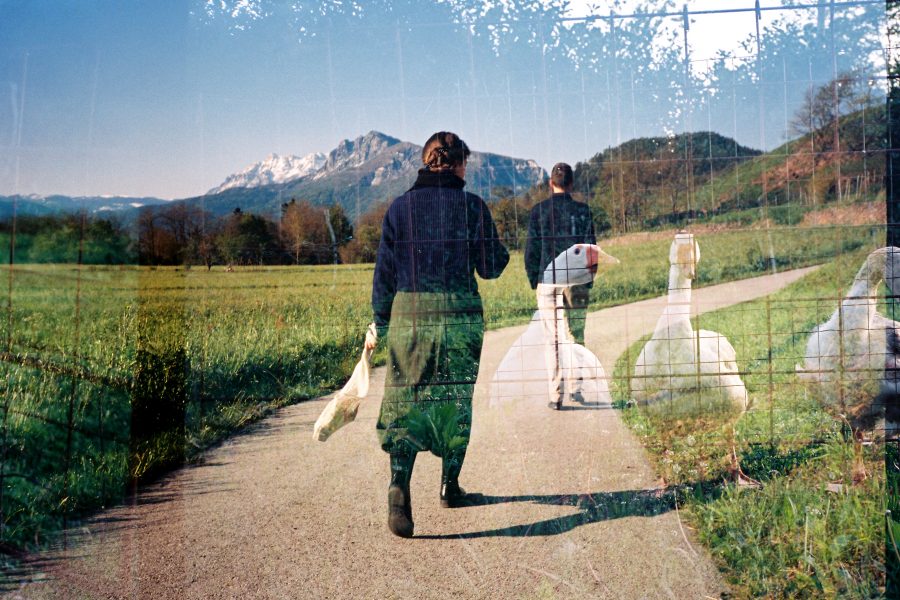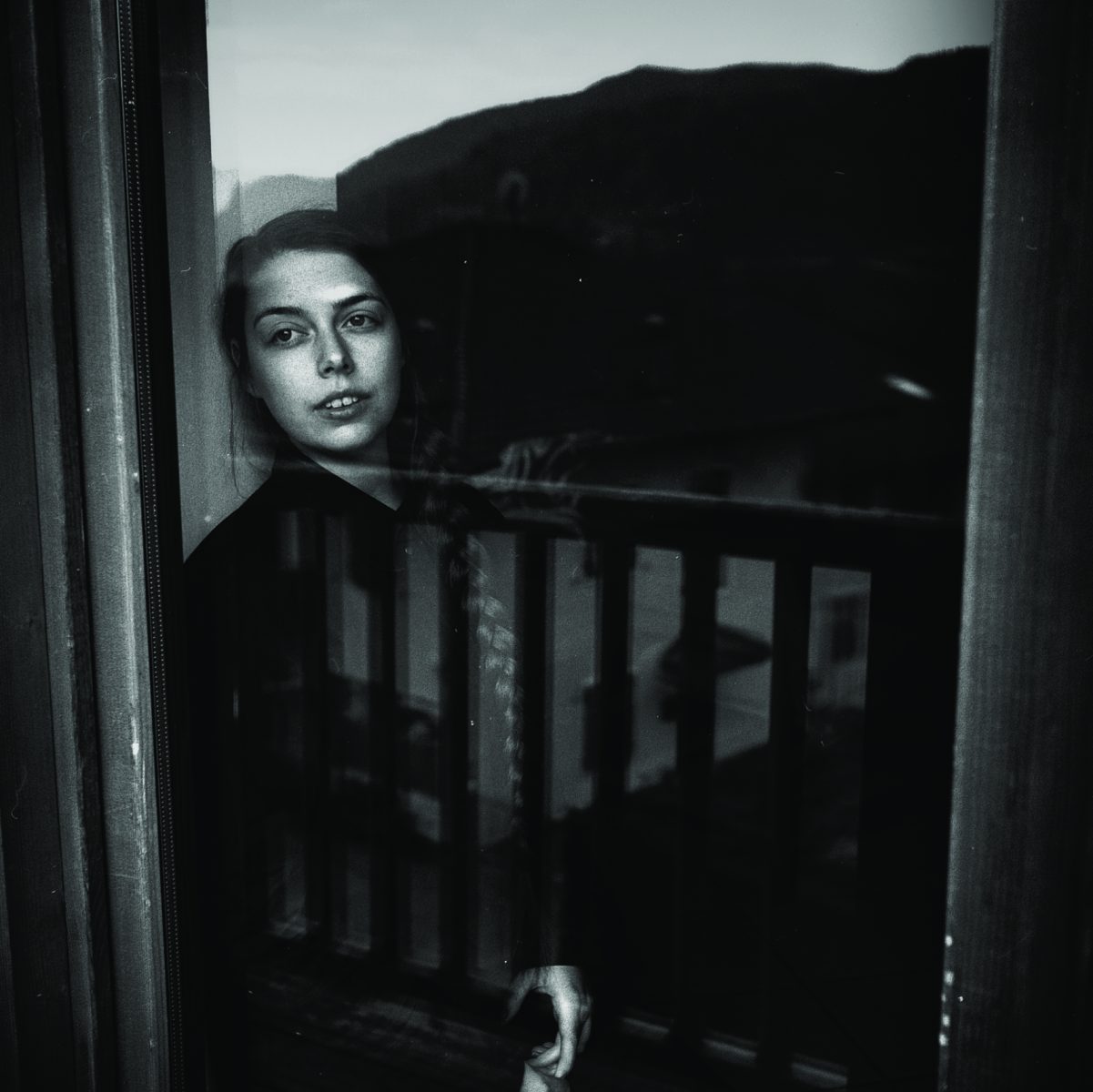
Eleni Debo is the Professional winner of the Editorial Category, sponsored by Procreate. Here she gives her insights into how she created this award-winning project.
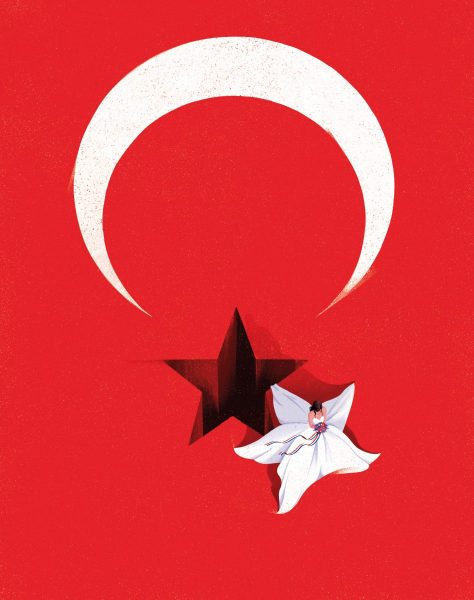
I was commissioned by De Volkskrant, a Dutch newspaper, to create a cover and one follow-up image for the opinion pages. The article I was to illustrate told the story of a Turkish woman marrying a Dutch man, and the intercultural friction that was consequently brought about. The backlash from the Turkish community especially as a response to her leaving behind a couple of Turkish traditions in favor of Dutch ones, was what drove her to write about this experience.
In the two illustrations I made (of which I only submitted the cover), named ‘Eloping traditions’, I tried to visualize both the emotions of betraying your culture, as the feeling of being constricted by it.
Brief
It’s always a pleasure working with De Volkskrant as the brief is always very straightforward and I get a lot of creative freedom in how I want to portray the topic. I received a short summary of the topic, and a draft version of the article. They needed a full page cover illustration (which is the one I submitted), and a follow up image to accompany the article, for which I was free to choose the dimensions.
Research
I started out by researching Turkish wedding traditions, alongside with watching a few of the interviews the author had done about the topic. I usually make a mindmap where I write down any associations I have with the topic and add in visual materials, like photos or colours or shapes that are linked to the topics at hand. I use that mindmap as the base to start forming ideas by trying to make visual connections to two previously unconnected words on the map.
Materials
Both the sketch and final illustration were done digitally.
Process
During my research I came across a custom of how Turkish brides traditionally wear a red veil on the wedding day and was looking into combining the idea of the red Turkish flag covering the face of the bride instead of this traditional red veil. After trying out several sketches of this idea, I wasn’t convinced by it. I wanted to create an illustration that avoided obvious judgement, and that was able to be interpreted seen from both sides in an effort to allow an open discussion about the friction between tradition and modernization. The Turkish flag seemingly smothering the face of the bride was just too obviously denoting the restrictiveness of certain traditions, so halfway through I dropped that idea. During the research I had spotted the fact that the Dutch and Turkish flag have almost the same colour palette of red and white, with the addition of blue in the Dutch flag. I liked the idea of showing the Turkish bride slowly assimilating Dutch culture by sneaking in some blue details into a predominantly red and white scene. This is where the idea grew to use the Turkish flag as a base for the two illustrations. Looking at the white star and moon of the Turkish flag, it suddenly just clicked that that little star could perfectly represent our Turkish bride in a white dress, who wanted to leave from her traditional spot beneath the Turkish moon. I ended up creating a very minimal scene with a bold display of the Turkish flag, and the bride, wearing a star-shaped white dress walking away from her post, leaving a gap in her place.
Challenges
Once the idea was set, the most difficult part was figuring out how I could transform the star to make it look like a bride, without losing the recognizability of the flag too much. My initial idea was to have the bride be shown perfectly from above looking down, to have a flat-like perspective to go together with the flat shape of the moon. This however created some difficulty with the readability of the image, forcing me to lower the angle of the perspective slightly to be able to show a little bit more of the bride and make how more recognizable.
Insights
I do a lot of editorial pieces on a weekly basis, so I can’t exactly pinpoint anything I specifically learned from this project. Doing editorial work on a general level however, has learnt me how to navigate delicate topics and how to translate complex stories into a single image. The short deadlines have been great to teach me to make decisions faster and to streamline my creative process to avoid losing time. I’ve been working editorial jobs for a couple of years now and it has been absolutely invaluable for my artistic progress.
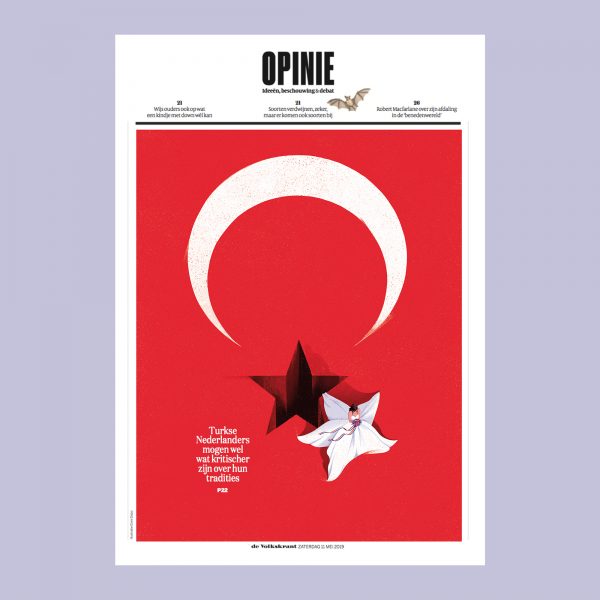
Distractions
As it so happens, during the time I was working on this brief, I was in the process of picking out my own wedding dress, and arranging my own marriage, thinking of which traditions to keep from my culture and which from my husband’s. I wouldn’t call it a distraction, much rather a happy coincidence, but I do think it unconsciously colored my approach to the brief. I definitely was aware of the delicateness of navigating between your own expectations and those of the families and their respective cultures! Luckily no cultural backlash for me! Although we did have a a rather hefty discussion about whether or not the coffee should be served before or after dinner 😉
Numbers
I’ve only used 3 colors (plus tonalities) for the illustration, 4 if you include the paper white, So that’s red, white, blue and black in overlay, to keep my illustration within the palette of the Turkish and Dutch flags. I had 14 days from brief to delivery of the finals, which is quite long for a newspaper illustration.
Reflections
Due to the time restrictions in editorial work, I do a lot of my pieces digitally (or a combination of digital and traditional), which is great to save time in doing scanning and corrections. But sometimes I do miss the meditativeness of waiting for paint to dry, and the pleasure of having a drawer full of original paintings, instead of a hard drive full of files. So if the deadline allows for it, I might be keen to work traditionally again, or to make the mix between the traditional and the digital more often.
Advice
Diving into editorial illustration is a great way to improve your work and workflow. The fast-paced world of newspapers and magazines might seem a little intimidating to beginning illustrators, but diving in headfirst is a great way to hone your skills: you learn to streamline your process (creating neater sketches, planning your colours ahead of time, not lingering too long on decisions that need to be made…). All of these things are great skills to learn, because it saves you precious time that can be spent on actually making the illustration, and makes that part of the process all the more pleasant.
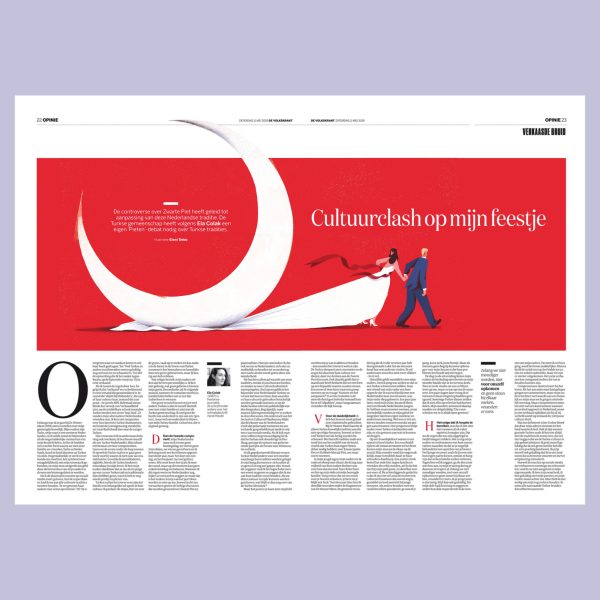
Future
I’m mostly just keen on keeping up the momentum. I like the work I’m doing now, and can only hope to further expand the scope of the kind of work I do. I definitely hope to add more animated illustration to my resume soon, as well as delving into product design. I suppose being able to balance my commissioned work (which is currently 99% of my work) with finding time to do self-initiated passion projects is the ultimate goal. Publishing my own book is high on that list of personal projects that I’d love to undertake.
Dream Commission
I’ve been wanting to do a mural, or at least life-sized drawings, for some time now. There is something terribly attractive to me about having your illustrations ’escape’ from the page or the screen, and instead have them interact with people, architecture, the way the sunlight hits them and shadows of the surrounding objects interplay with the shapes of my drawings. All of a sudden there are so many more dimensions that you can discover and experiment with once you leave the 2D realm of paper. I’ve always been interested in how my illustrations work within their context, which in my case usually is the page lay-out, and have always been mindful of how that interacting can add to the story I’m telling. I can only imagine the fun I’d have in confronting my work with the real world.
Favourite thing to draw
Probably clouds. No limitations on drawing clouds. Nobody’s ever going to tell you that your cloud looks weird. Want to make a cloud purple instead of white? Go for it, only adds to the drama!
Workspace
I currently live in a small mountain village in the Italian Alps, since I moved here from Belgium 3 years ago. I work from home in my small atelier overlooking the mountains and forest. My husband (who also works from home) and I like to start the day with a trek to the top of the hill our village is situated on, or to grab a picnic and a splash in the lake 5 minutes from our home to cool off during the hottest hours of the summer. After living and working in the city for a couple of years before moving to Italy, and spending our scarce holidays in the mountains to unwind and destress from our jobs, we figured, why not move to our holiday destination instead? It has definitely made our sometimes stressful life more balanced and pleasant (and healthy!).
